In the ice of the Floating Continent: history of Arctic exploration
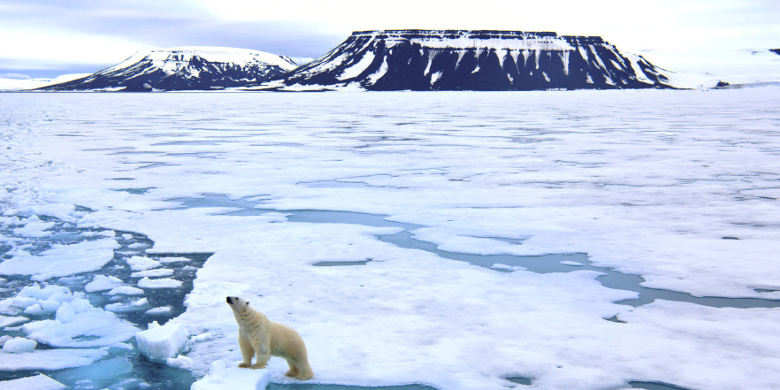
120 years ago, the bravely madman Swede Solomon Augustus André, along with two other friends, tried to reach the North Pole. Why "to madness"? They chose a balloon as a vehicle. We will not go into details, the expedition ended unsuccessfully - after a few months everyone died. Still, the researchers did not give up, and to the very end made scientific observations. The history of the study of the Arctic is full of examples of tragic and successful expeditions, triumphs and defeats. We decided to recall some interesting facts and places related to the Arctic.
Unlike Antarctica, the Arctic is the name of a region, not a continent. There is no land at the North Pole, there is only the ocean covered with eternal ice.
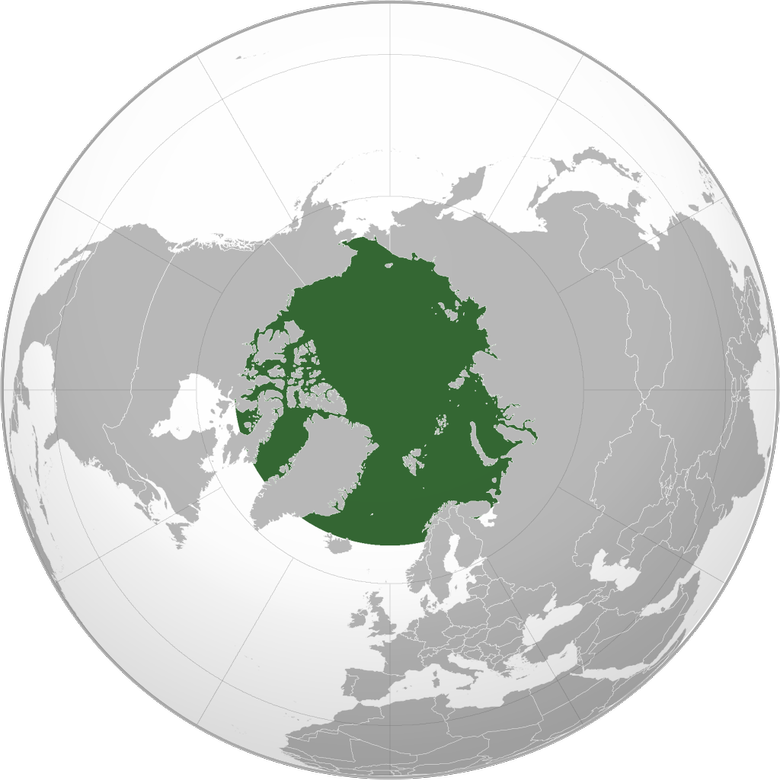
According to one point of view, the border of the Arctic coincides with the southern boundary of the tundra; according to another, the Arctic is outlined by the Arctic Circle.
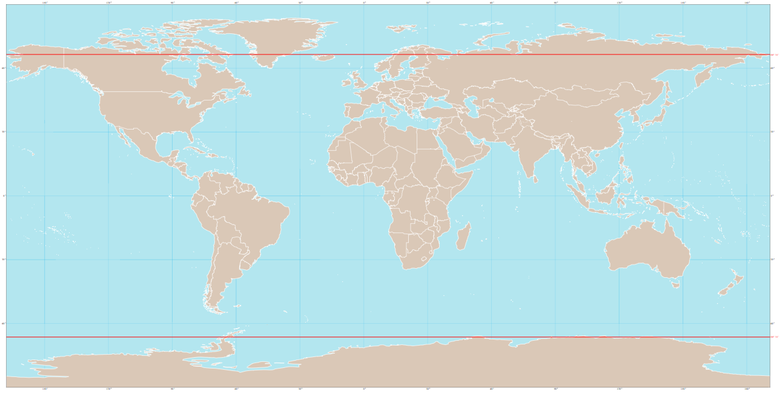
The Arctic Circle is the top red line.
The development of the Eurasian Arctic and the coastal zones of the Arctic Ocean began several thousand years ago. Today, 1.5 million people live above the 67th parallel in Russia, several cities with thousands of people and industry have been built on the permafrost. Archaeologists believe that the first people appeared on the northern coast, according to various sources, another 45,000 - 30,000 years ago, and the islands of the Barents Sea met the first Homo sapiens 3-4 thousand years ago.
The South Pole of Cold is located in Antarctica, and there stands the Russian research station Vostok. But with the North is not so simple. Formally, the city of Verkhoyansk and the village of Oymyakon compete for the title of the coldest places in the Northern Hemisphere.
Verkhoyansk:
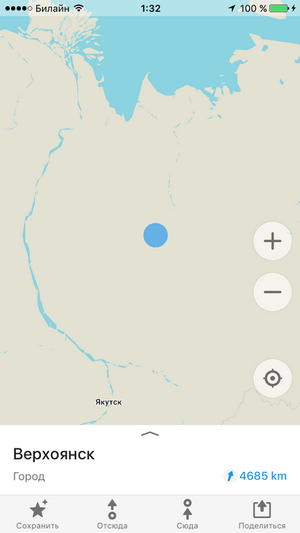
Oymyakon:
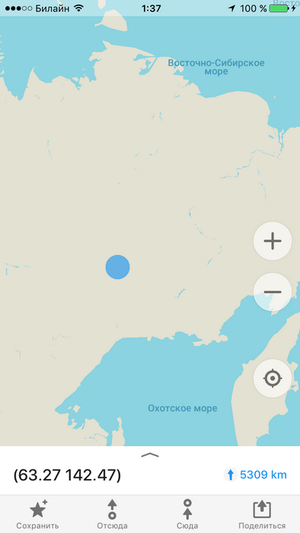
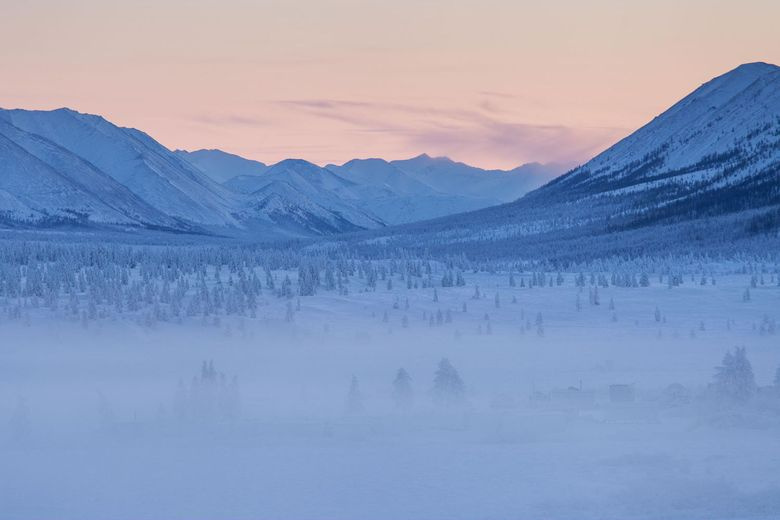
Now they have the same absolute temperature minima: - 68 degrees Celsius. Verkhoyansk is located beyond the Arctic Circle, that is, formally in the Arctic, and Oymyakon is located to the south.
From the 11th century AD, Russian coast-dwellers began to swim into the basin of the Arctic Ocean. In the next couple of centuries, Vaigach Island was discovered:
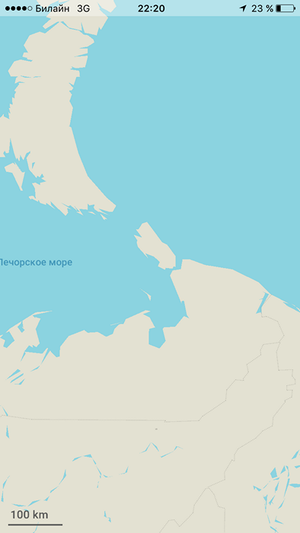
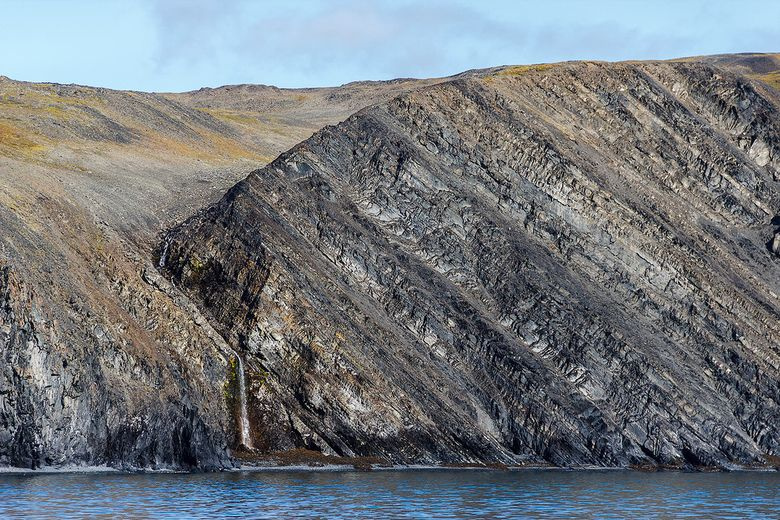
Archipelago Novaya Zemlya:
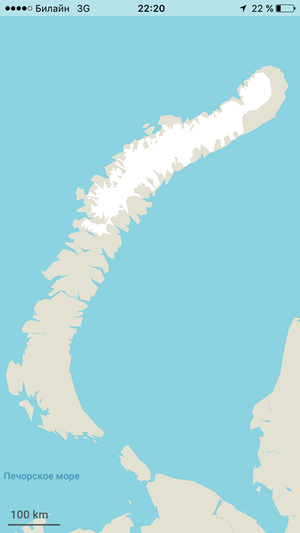
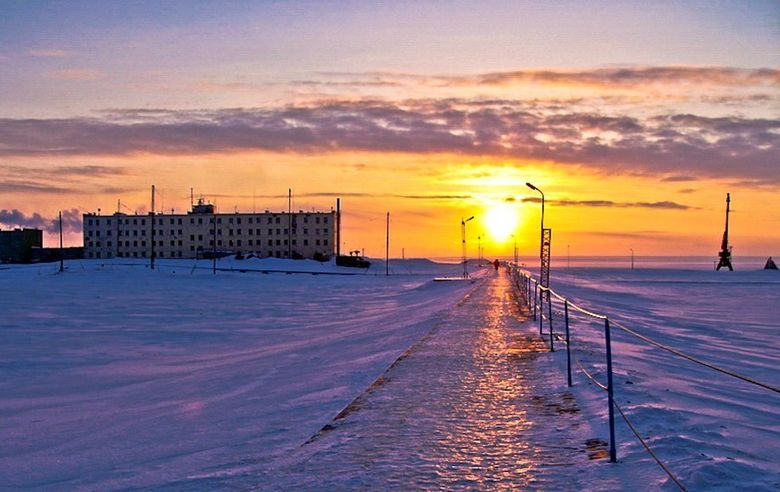
Svalbard Archipelago (it is believed that in the 16th century there were Pomor settlements here):
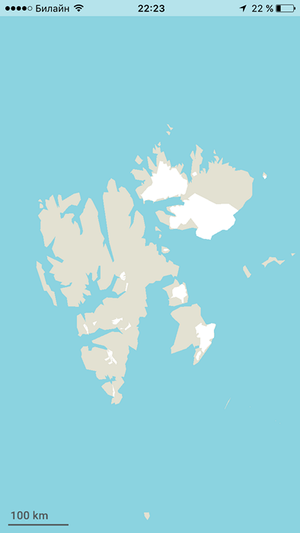

The first Russian city in the Arctic - Mangazeya - was founded in the 1600th year. It was a port city and trading station that was supposed to control the fur trade. But only 20 years later, a ban was imposed on swimming in Mangazeya, because of which the city quickly fell into disrepair and disappeared.
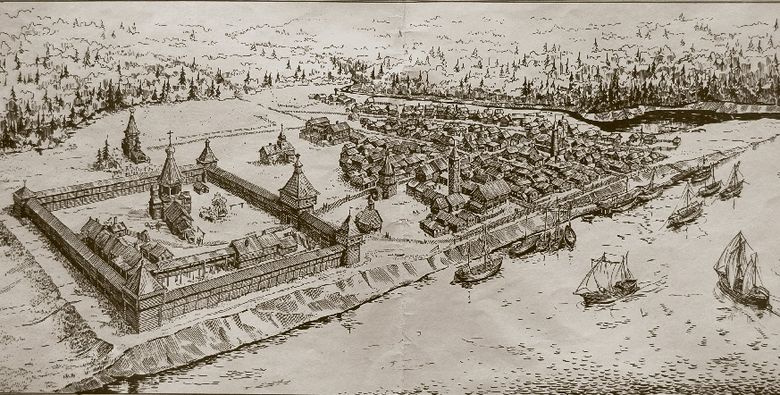

In 1648, Semyon Dezhnev was the first of the famous navigators who sailed through the Bering Strait. So Western civilization learned that North America and Eurasia are separated by a strait.

In 1873, the Austro-Hungarian expedition discovered the Franz Josef Land Archipelago, which since 1926 has been a Russian territory.
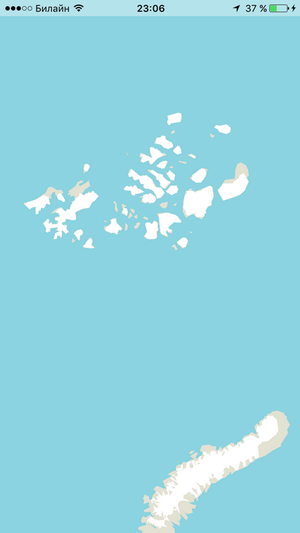
In 1915, the northernmost Russian settlement, the village of Dikson, was founded. Concurrently, this is our northernmost port.
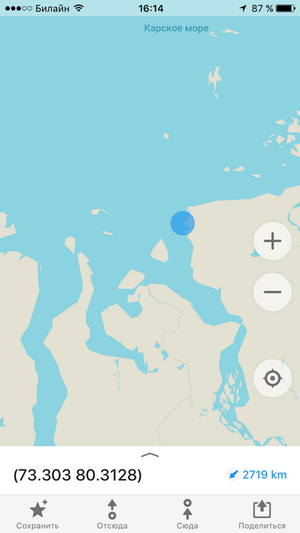
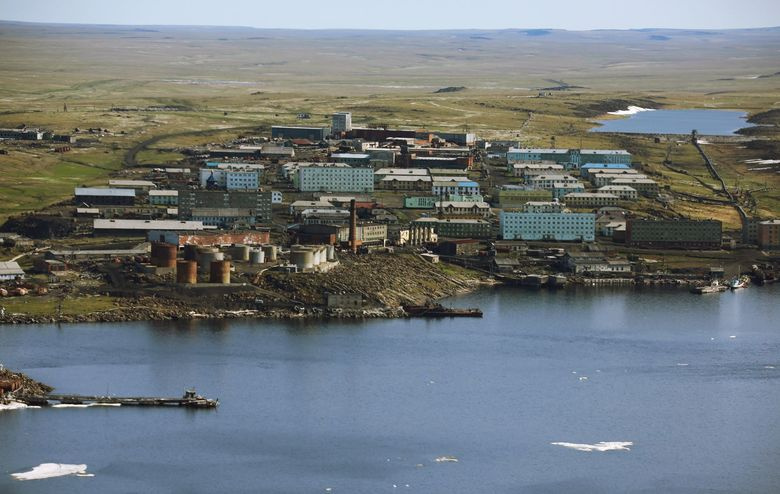
By the way, it is still a place to stay: it's warmer here in August, the average temperature barely reaches +5 degrees (until June - below zero).
In 1928, the historic flight to the North Pole of the airship "Italy" under the command of Umberto Nobile took place.
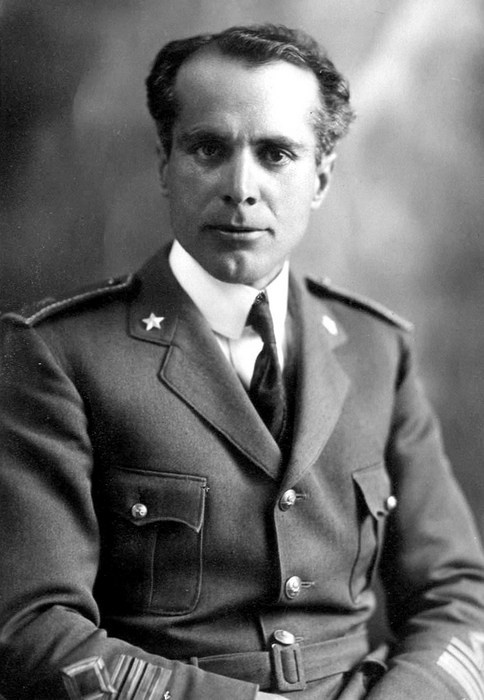

A couple of years before, the Italian had been on the top of the planet on the airship "Norway", which was led by the legendary Roald Amundsen. But after the flight, two ambitious explorers smashed to pieces on the basis of the one who made a greater contribution to the expedition. As a result, Nobile decided to prove that he would perfectly repeat the flight without Amundsen. To do this, was built "Italy", which successfully reached the North Pole, but on the way back, north of Spitsbergen, suffered a catastrophe.
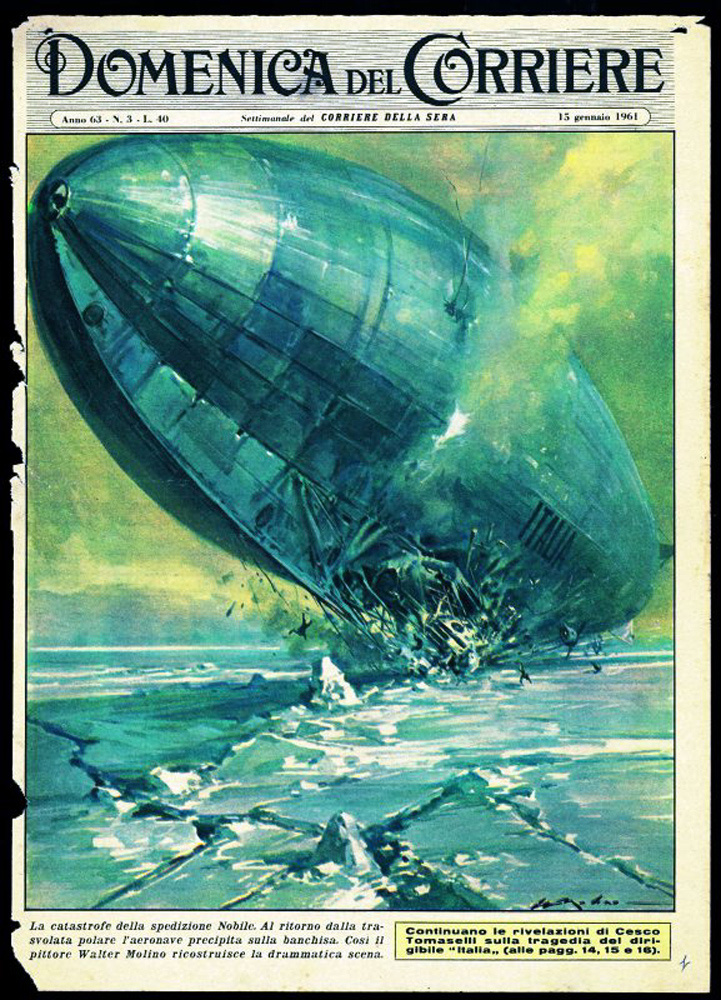
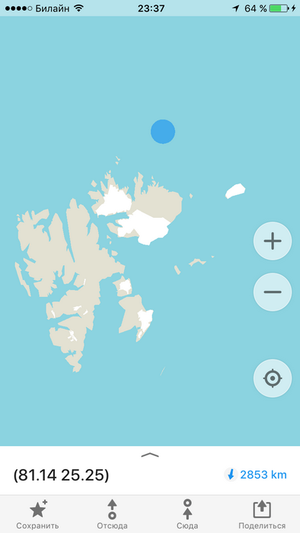
Some members of the expedition died in the crash, the rest remained on the ice and requested help on the radio, which miraculously fell from the airship along with part of the equipment and provisions. The expedition Nobile was riveted the attention of the whole world. And when the SOS signal was received by the Soviet radio amateur, hastily began preparations in several countries for rescue expeditions. The USSR sent two icebreakers to the ice floe with distress: the Malygin and Krasin. Searched for Italians and the Swedes and Norwegians. We must pay tribute to Amundsen - despite disagreements with Nobile, he immediately joined the search. It killed him: Amundsen died in a plane crash while flying to Spitsbergen. And the expedition Nobile was saved by the Soviet icebreaker Krasin.
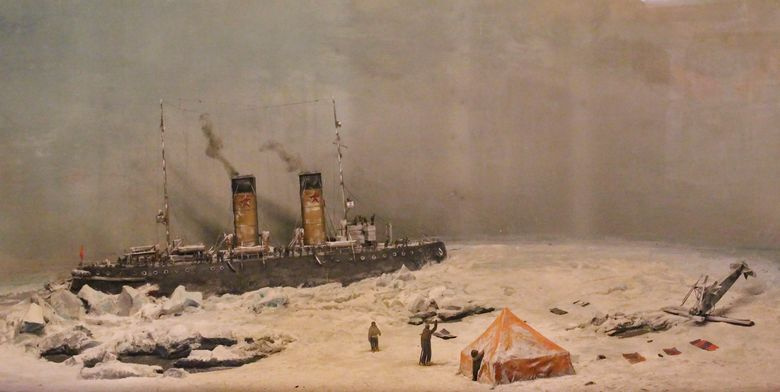
In 1934, our country again had to rescue people caught in the Arctic ice. The Soviet ship "Chelyuskin" set off along the Northern Sea Route from Murmansk to Vladivostok. However, in the Chukchi Sea, it was covered with ice, and the ship drifted for five months at the mercy of hummocks. Be with him a modern icebreaker , this would not have happened. In the end, the hull could not stand it, and the Chelyuskin sank. There were 104 people on the ice (including several women and children, and one newborn).
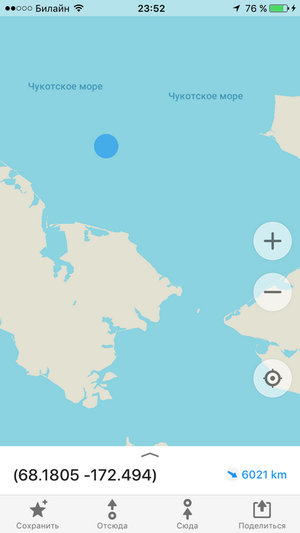
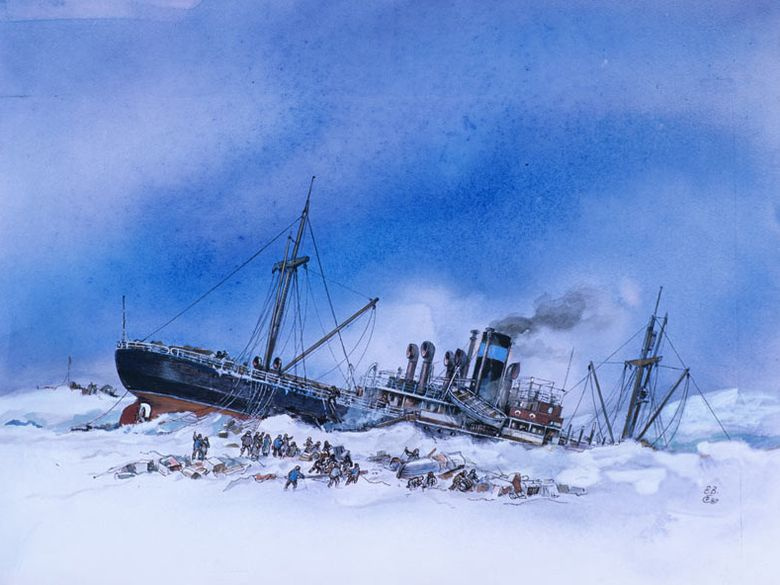
It was decided to use aviation for the evacuation. But the “Chelyuskinites” had to wait on the ice for two months, until they managed to deliver the planes closer to the place where the ship crashed, and then wait for the flying weather. Fortunately, before the ship was flooded onto the ice, it was possible to unload supplies and building materials from the ship’s cargo. Barracks were built from planks and bricks on an ice floe, so that unprepared people managed to hold out until help arrived. Even today, saving such a large number of people in such a wilderness is not an easy task. And in those years, aviators performed a real feat: 23 flights were made on ANT-4, R-5, Consolidated Fleetster and Junkers W-33 aircraft, but they saved everyone. For this accomplishment, several pilots were the first Heroes of the Soviet Union in history: Anatoly Lyapidevsky, Sigismund Levanevsky, Vasily Molokov, Nikolai Kamanin, Mavriky Slepnev, Mikhail Vodopyanov, Ivan Doronin.
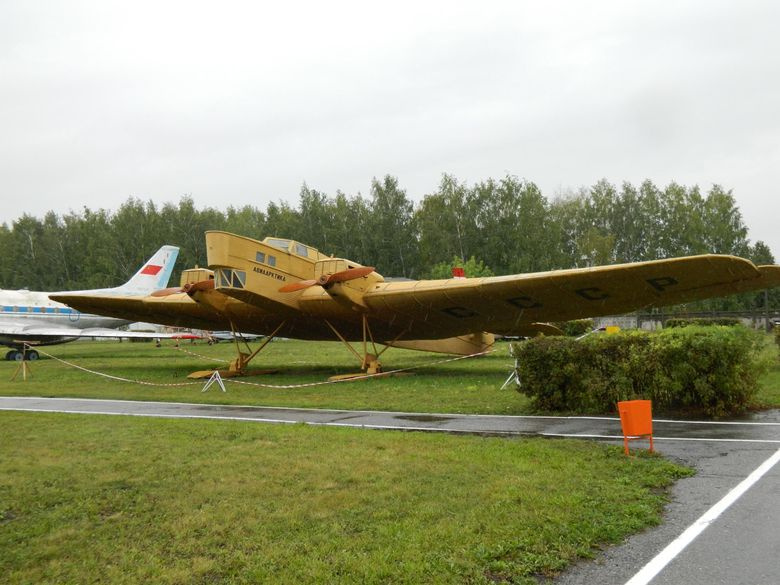
ANT-4
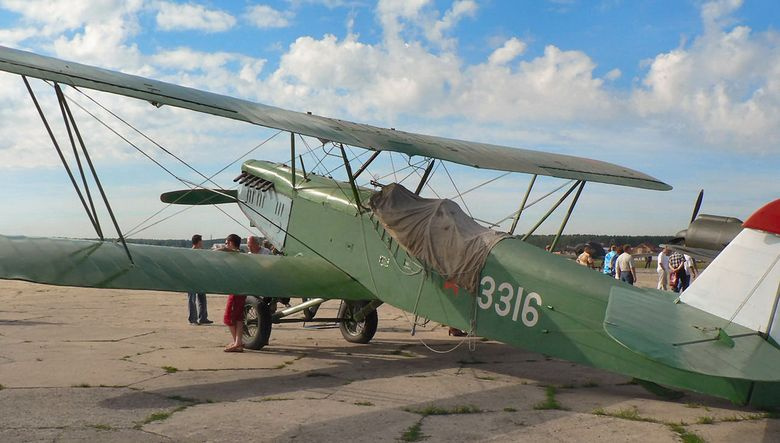
P-5

Consolidated Fleetster

Junkers W-33
The next year after the rescue of the “Chelyuskinites”, in 1935, the construction of the port of Dudinka began. It is located on the Northern Sea Route, at the mouth of the Yenisei River, and today it acts as a river and sea port. Its peculiarity is that it is the only port in the world whose moorings are completely flooded during the spring flood, when the Yenisei is free from ice. Flooding lasts about a month. Before the start of the flood, port cranes and other equipment are transferred to upstream sites, to which water usually does not reach.

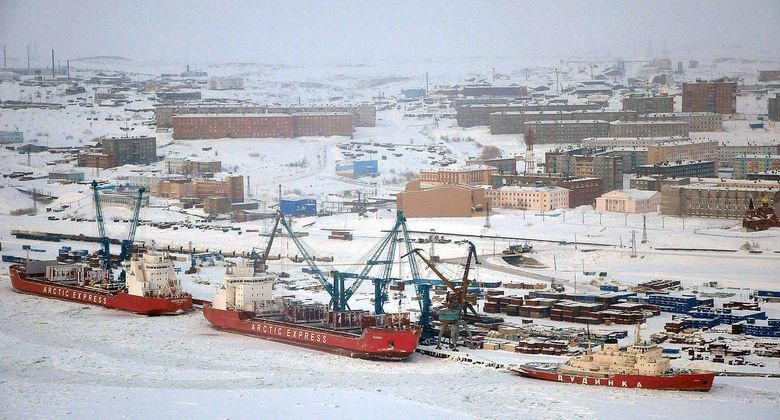
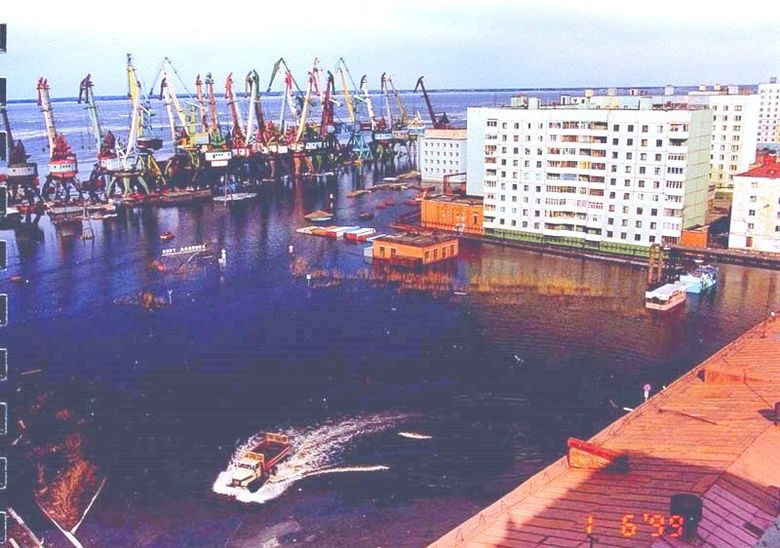
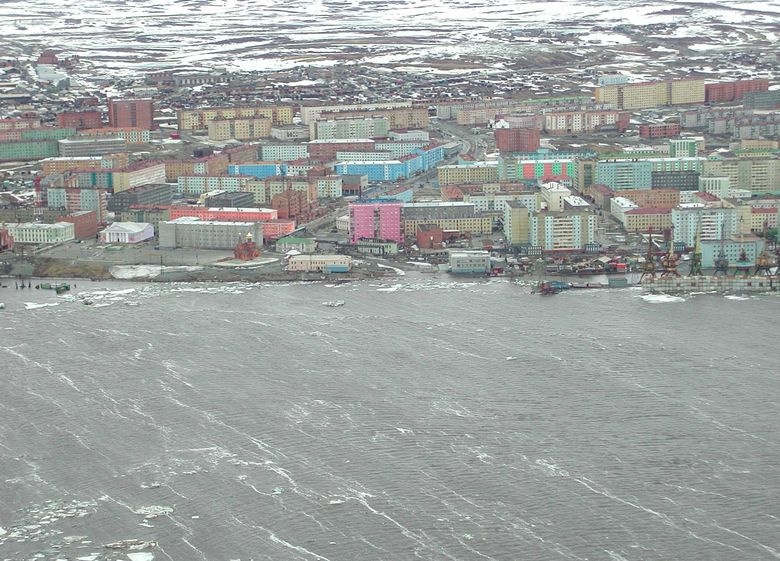
In 1937, two major events were recorded at once in the history of Arctic exploration: an expedition led by Ivan Papanin established the world's first drifting research station at the North Pole, and the crew of the ANT-25 aircraft, which was controlled by Valery Chkalov, made a non-stop flight Moscow — the North Pole —Portland (USA).
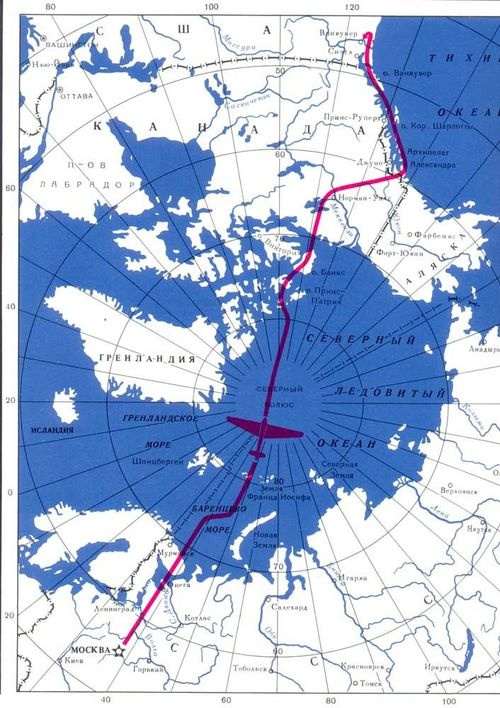
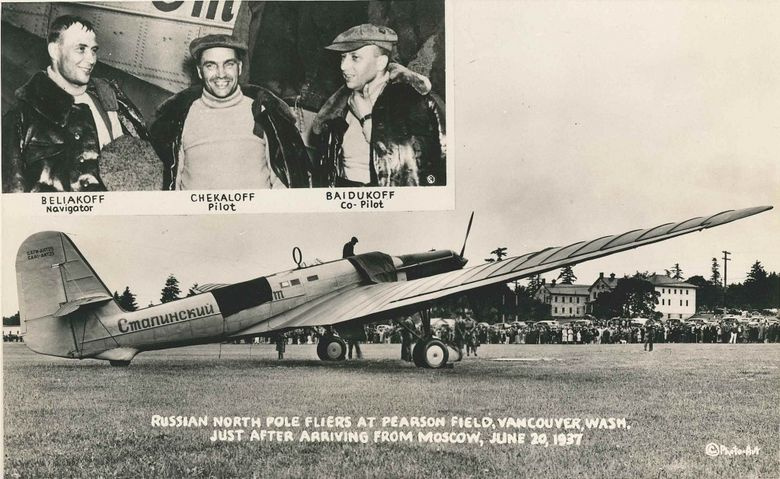
In 1957, the world's first nuclear-powered icebreaker "Lenin" was launched, which opened the era of the Russian atomic icebreaking fleet. Moreover, it became the world's first atomic surface ship. The icebreaker worked on the lines of the Northern Sea Route until 1989, and today it has a museum.
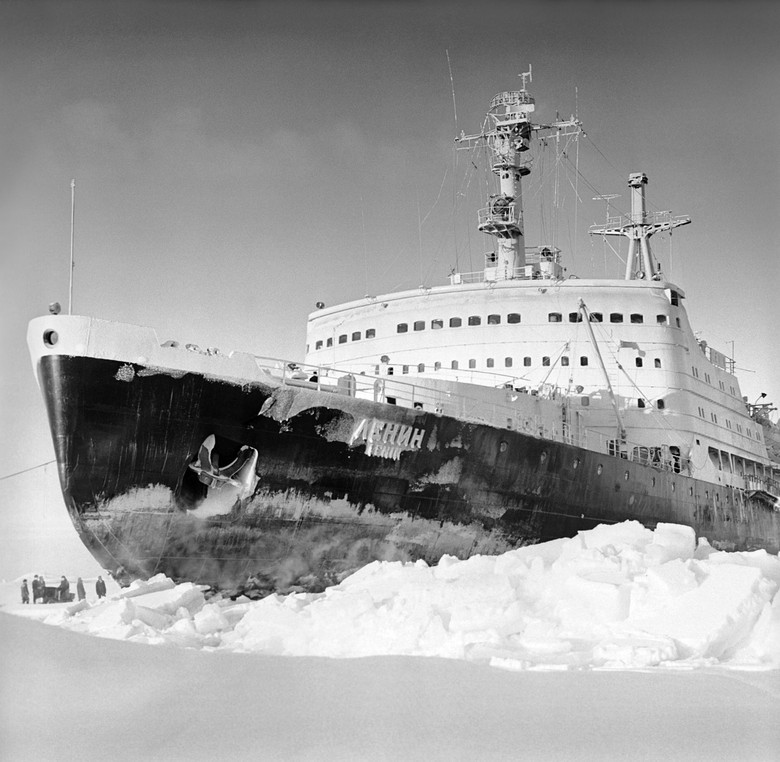
In 1961, another epoch-making event occurred in the Arctic: the most powerful weapon in the history of mankind was tested over Novaya Zemlya - the thermonuclear bomb of extra-large power AN602, popularly known as “Kuzkina's mother”. This nickname appeared after Nikita Khrushchev declared then Vice President Richard Nixon in 1959: “We have means at our disposal that will have grave consequences for you. We will show you a gruel! ” By that time in the USSR for several years the “ultimatum” thermonuclear bomb had been developed, which was supposed to prove the superiority of our troops in a hypothetical war with the United States. In addition, AN602 wanted to assess the possibility of reducing the number of carriers of atomic weapons - strategic bombers - due to the enormous increase in the power of ammunition: heavy-duty bombs could destroy large cities alone, and even urban agglomerations.
AN602 was originally developed as a 100-megaton bomb, but due to the fact that during the tests a huge zone of the strongest radioactive contamination was formed, the third stage was abandoned in its design. As a result, the power of the bomb dropped to 58 megatons.
October 30, 1961 (the same year, Yuri Gagarin and German Titov flew into space, construction began on the Berlin Wall) AN602 was blown up at an altitude of about 4 km above the Novaya Zemlya archipelago.
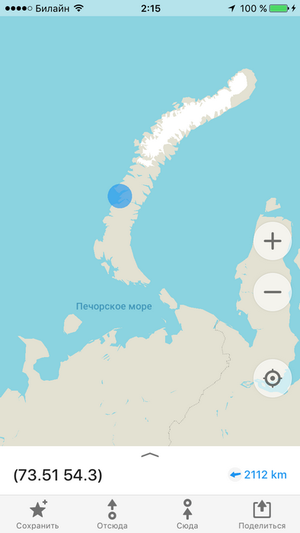
In 1977, the Arctic class icebreaker was the first ship in the world to reach the North Pole under its own power. Although even to him - the “Arctic” was a powerful icebreaker - this was not easy due to the very thick ice and humming.

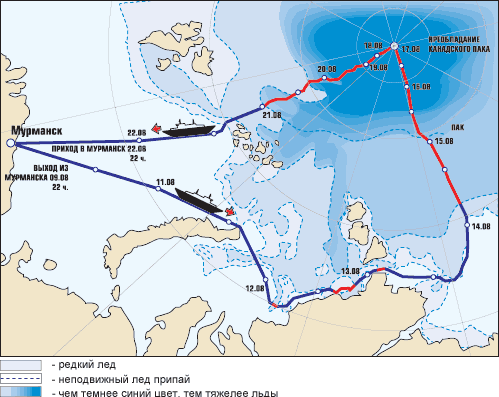
On August 18, 2000, the worst tragedy for our country occurred in the Arctic: the nuclear submarine K-141 Kursk sank during exercises. All 118 people on board were killed.
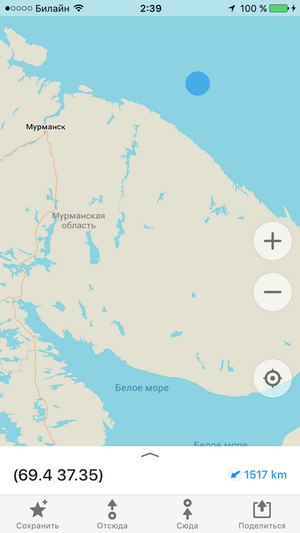
There are many versions of the causes of the disaster. Official: the explosion of a training torpedo in a torpedo tube caused a fire, which detonated the remaining torpedoes in the first compartment, which led to the destruction of several more compartments.

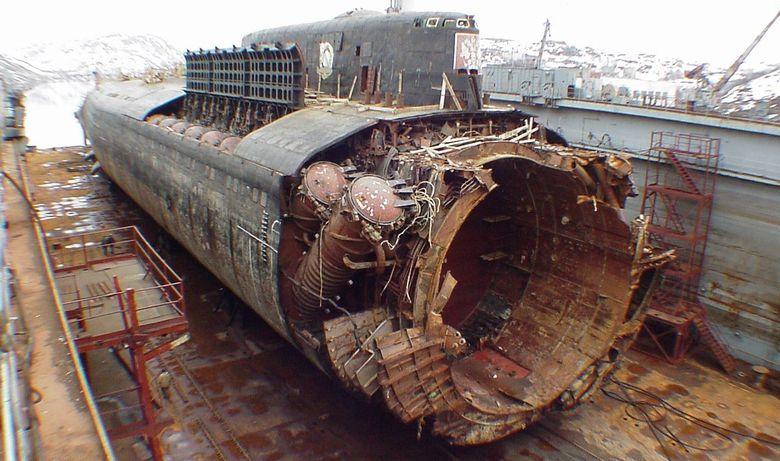

Now cutting K-141 is installed in Murmansk as a monument.

The increasing interest in the Arctic on the part of many countries, as well as Russia's zealous assertion of its rights to the Arctic segment, are due to the presence of rich oil and gas shelf deposits. In 2014, the first oil was produced on the first and so far the only oil-producing platform on the Russian Arctic shelf - Prirazlomnaya. This is a specially designed ice-resistant platform, all the byproducts of the drilling of which are not thrown into the sea, but are either transported by ships or pumped into a special well. It is argued that the "Prirazlomnaya" is able to withstand the most cruel orgy of elements. The depth of the sea at the drilling site is only 20 meters, so the platform is not floating, but stationary, mounted at the bottom.

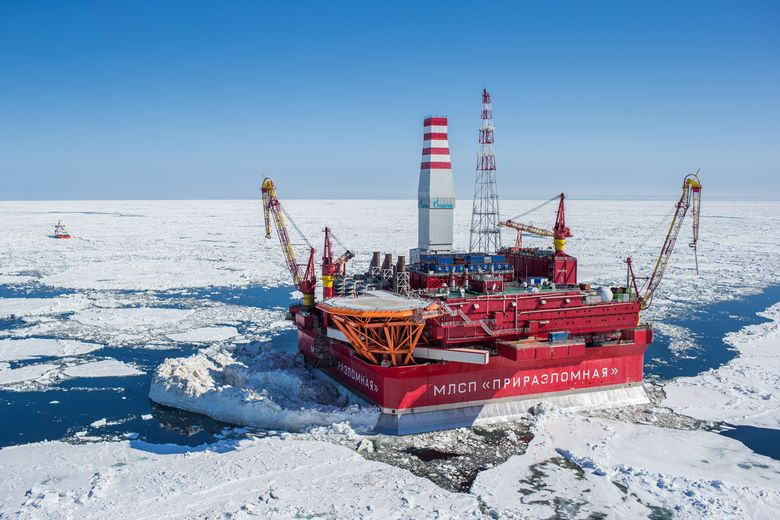
The Arctic is not only a history of human exploration. This region is full of unique and beautiful places, a large number of national parks are created here. For example, on the Putorana Plateau, a World Heritage Site, there are many very picturesque canyons and lakes, it is even called "the land of ten thousand lakes and thousands of waterfalls." That's just to get to Putoran very difficult.

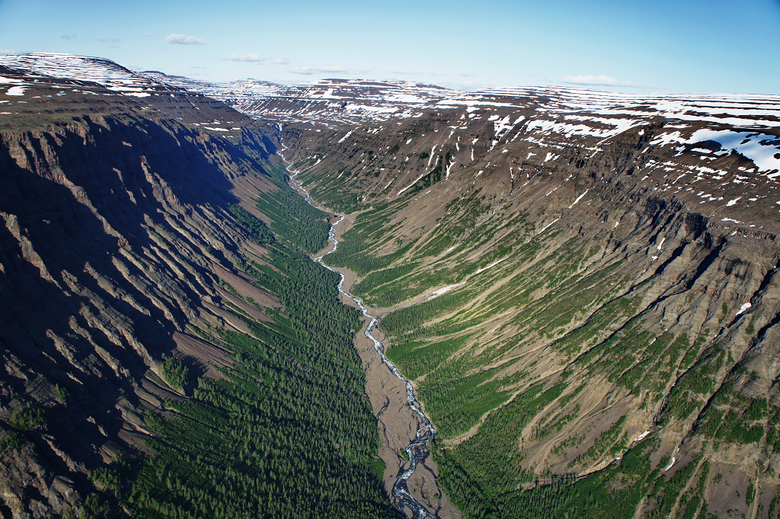

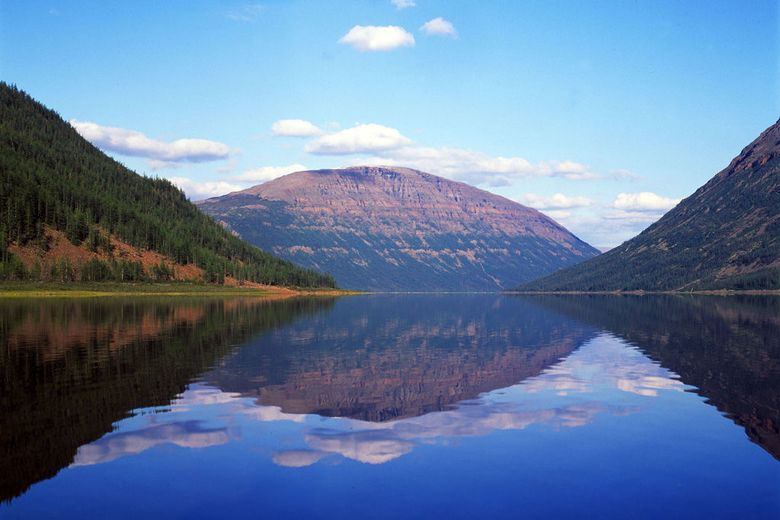
The landscapes of Wrangel Island are not particularly picturesque, but on the other hand, 300-500 polar bears come to give birth annually to bear cubs - more than anywhere else. Also on the island are the largest Arctic rookery walrus. Moreover, mammoths existed here for the longest time, and their smallest, dwarf variety is no more than two meters tall. It is believed that the last "hairy elephants" of Wrangel Island became extinct during the reign of Pharaoh Tutankhamen (around the 1340s BC). Another interesting fact: the island is roughly divided in half by the 180th meridian, and the left side is in the Western Hemisphere, and the right side is in the Eastern Hemisphere.
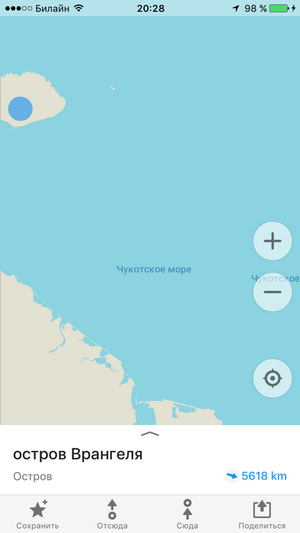
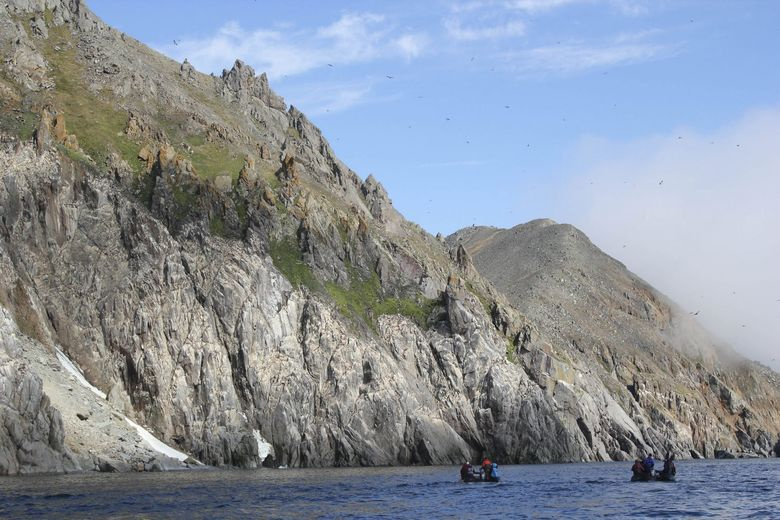
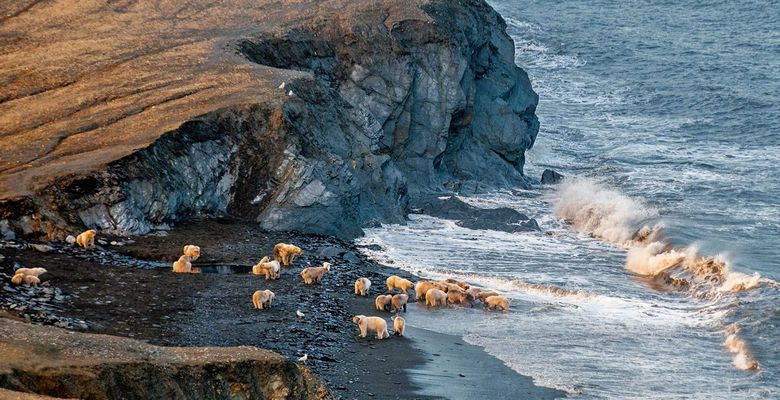
This concludes our short review. Of course, there are countless interesting places in the Arctic, both natural and man-made. Perhaps next time it is better to go on vacation not to Turkey, but to the Khibiny, to Franz Josef Land or the Putoran plateau?
All Articles